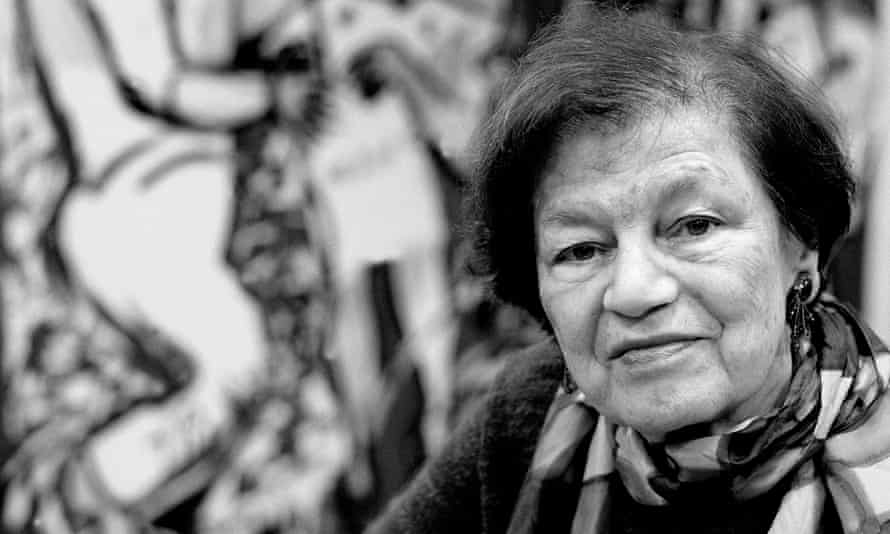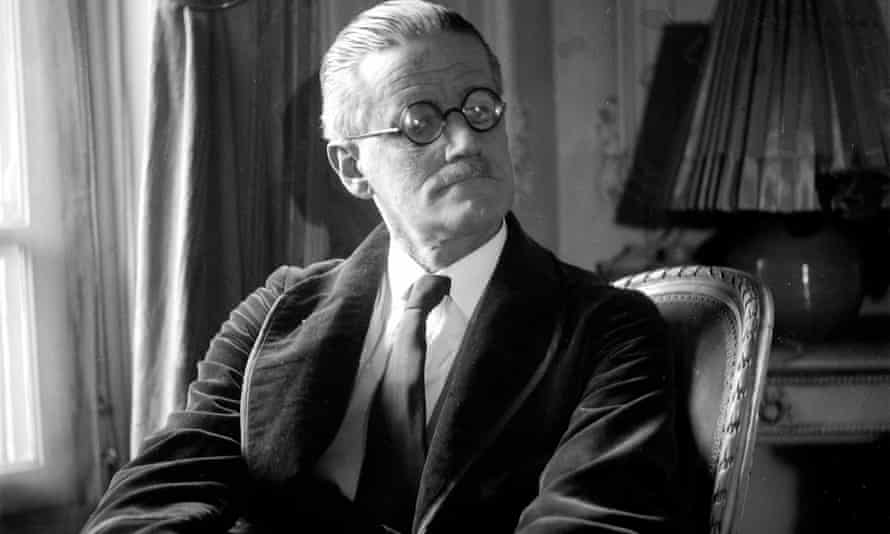What Makes A Great Short Story
"The Tribute" by Jane Gardam (1980)
John McGahern and Annie Proulx are among my favourite authors, but to dispel gloom I choose this story from Jane Gardam's 1980 collection The Sidmouth Messages. Reading this gleeful story in my departer days, I recognised the cast of "diplomatic wives", trailing inebriate husbands through the ruins of empire. Mostly dialogue, it is a deft, witty tale in which a small kindness – though not by a diplomatic wife – pays off 40 years later. I must accept read it a dozen times, to come across how its notation is sustained and the surprise is sprung; every time it makes me smile with please. Hilary Mantel
"The Rock Boy" by Gina Berriault (1957)
This cracking and underrated masterpiece is a meditation on practiced and evil and specially about the manner that people's expectations and assumptions about us may wear us down and eventually force u.s. into compliance with their view. Only it is a much deeper and more biblical story than that and, similar whatsoever not bad work of art, resists reduction. Berriault, who died in 1999, is known as a San Francisco writer. A wonderful sampling of her stories is available in Women in Their Beds: New & Selected Stories. George Saunders
"The Love of a Good Adult female" by Alice Munro (1998)
Among the handful of short stories closest to my heart, I've chosen "The Love of a Skillful Woman" by Canadian writer Munro, from her 1998 drove of that name. It'due south nigh a murder – probably it's a murder, considering nothing is sure – and a love friction match that depends on keeping that murder hush-hush. Similar then many of Munro's stories, this one has the scope of a novel yet never feels hurried or crowded. The sociology of a small town in rural Ontario is caught on the wing in the loose weave of her narration; the story takes in whole lifetimes, and yet its pace is also exquisitely slow, carrying us deep inside detail moments. A woman moves among the willows beside a river at night, making up her mind. Tessa Hadley

"The Siren" by Giuseppe Tomasi di Lampedusa (1961)
Born in Palermo in 1896, Lampedusa was a learned prince who died before his work was published. In improver to his historic novel The Leopard, he left behind some short stories, including "The Siren", a mysterious masterpiece that jolts and haunts me every time I read it. It contains two narrative planes, two key protagonists, two settings, ii tonal registers and ii points of view. In that location are even ii titles; though published every bit "La Sirena", it was originally called "Lighea", the proper name of the siren, portrayed as a sixteen-year-erstwhile girl. Lampedusa's description renders this fatefully seductive creature specific, vulnerable and real. Jhumpa Lahiri
The Penguin Volume of Italian Short Stories, edited by Jhumpa Lahiri, volition exist published on 7 March.
"A Uncomplicated Heart" by Gustave Flaubert (1877)
Flaubert wrote this story for his old friend and "young man troubadour" George Sand. Information technology's the story of Félicité, an old retainer-adult female, and the diminishing loves in her life, the final one being a (alive – at outset) parrot. It has a sombre novelistic density, and is touching and tender, comic and grotesque. Control of tone is central to its effect. It also exemplifies the Flaubertian principle that irony and sympathy are not incompatible. Sand died before she was able to read it. "So information technology is with all our dreams," noted Flaubert. Julian Barnes

"Friends" past Grace Paley (1985)
This story tracks three friends every bit they visit a fourth who is dying. The women so go home on the train. It ends with a cursory conversation between the narrator, Faith, and her 18-year-old son. The piece has warm intimacy every bit well as cold spaces within information technology. It captures the all-encompassing intrusion of the world and its conditioning of our twenty-four hour period-to-day emotions, our children'southward colonisation of our hearts and our powerlessness ultimately to protect them. Its understated tone is perfectly pitched: the narrative moves gently, and so soars, into either sadness, or joyful delectation – again and again. I am in this story, and so is the globe. Ahdaf Soueif
"My Life" past Anton Chekhov (1896)
This is Chekhov's longest brusque story and one of the very few he wrote in the starting time-person singular. It's the autobiography of a fellow in provincial Russian federation struggling to live up to his lofty ideals and being brought down by life's random contingencies. I actually adapted "My Life" for a play and know it intimately. If you could only read a single Chekhov story then this is the ane: all his gifts and genius – the wry, nighttime comedy of his voice, his unique bending on the human condition, his refusal to judge – are contained in it. William Boyd
"In the Nighttime" by Jamaica Kincaid (1978)
Part poetic incantation, office eccentric kaleidoscopic vision, this is a story which contorts each fourth dimension you read information technology. Built-in in Antigua, Kincaid invents aesthetics which are wholly unique, transfiguring human form and surroundings, in particular, the Caribbean landscapes. Here, she conveys the multiple textures of smaller islands, creating a literary geography which remains experimental, new and indefinable. Irenosen Okojie
"Music at Annahullion" by Eugene McCabe (2004)
McCabe's story is set on the border between Monaghan and Fermanagh onetime in the 1950s or 60s. 2 brothers and a sis are uneasily sharing a smallholding. The landscape itself and the states of sour feeling are described with sharpness and precision. When the sister announces that she would like a pianoforte that is advertised for sale locally, i of the brothers buys it for her. But it won't fit into the house and is left to rot exterior. The failure to become the piano into the house has an boggling power and pathos. Its purchase has stood for all hope, and now there is no promise. The hard-won sense of despair and darkness in the terminal pages of this modest masterpiece is memorable and chilling. Colm Tóibín

"Werner" by Jo Ann Beard (2007)
Only afterwards did I discover that this was in fact a piece of densely textured reportage, merely information technology taught me then much nearly how to write a short story that I will always see it equally one. A young human being, Werner Hoeflich, trapped by a fire, escapes by leaping from the window of his New York apartment, across the intervening gap and in through the window of the adjacent edifice. It has the richness of a novel, the raw and dingy grip of life and was, for me, a revelation. Fine language and a deftly conjured mood are all well and good, only fiction – of whatever length – should thrill. Mark Haddon
"The Window Theatre" by Ilse Aichinger (1953)
Miscommunication, antic disposition, voyeurism, glee – this translation of one of Aichinger's nigh famous stories provides windows upon windows upon windows. Simply expressed and fabricated to linger long in the mind, information technology was my offset experience of the prizewinning Austrian author and her dark, precise prose styling, and the starting time of an ongoing pursuit on my function to read more of her work. Eley Williams
"The Tell-Tale Heart" by Edgar Allan Poe (1843)
Poe'southward obsessive theme was the terror of losing sanity – never more dramatically evoked than in this masterpiece. In "The Tell-Tale Heart", 1 of Poe's shortest "tales of the grotesque and arabesque", and the 1 that seems most contemporary in the hallucinatory intensity of its narration, an unnamed individual commits a roughshod, seemingly unprovoked murder of an old man with whom he lives, disposes of the trunk past dismembering and burying information technology beneath the floorboards of the residence they share, and succumbs to madness and self-destruction in the aftermath of guilt. Throughout, the narrator insists on his sanity: "True – nervous – very, very dreadfully nervous I had been and am; simply why will you say that I am mad? The disease had sharpened my senses – not destroyed – not dulled them." That the murder is entirely irrational is acknowledged past the murderer: "Object at that place was none. Passion there was none. I loved the old human being. He had never wronged me. He had never given me insult. For his gold I had no desire. I think it was his centre! yes, it was this! One of his eyes resembled that of a vulture – a stake blue eye, with a picture show over it."
Poe is a primary of the "unreliable narrator" – a vocalization that speaks with devastating spontaneity and is utterly convincing – that has come to be a staple of much suspense and horror fiction in the 20th and 21st centuries. Unhampered by the literary pretensions of sure of Poe'south other, longer stories, totally committed to its unrepentant pathology, and its visceral commemoration of this pathology, "The Tell-Tale Eye" is the very essence of Poe, as Poe is himself the very essence of the American gothic tradition. Joyce Carol Oates
"An Occurrence at Owl Creek Bridge" by Ambrose Bierce (1890)
Many readers might come to this from the short flick, made rather confusingly in French. But it's a tale fix during the American civil war. Peyton Farquhar is being hanged by Union soldiers on a small bridge in Alabama. To say more than might ruin the experience of reading it. When I happened on the story a few years ago, I idea I might be i of only a few intrepid readers. Of course, information technology is considered to be 1 of the all-time stories in American literature. Sebastian Barry

"After Pelting" by William Trevor (1996)
William Trevor has influenced me more than any other writer, and it's impossible for me to name one story by him that is an absolute favourite. I tin, notwithstanding, name 20 to thirty stories that I render to oftentimes. One of these is "After Rain". A adult female travels alone to recover from a love that has ended too abruptly, just the wish that solitude could exorcise loneliness is equally faulty as the wish that love could exorcise disappointment brought by beloved. The story to me is like an eye drop for the mind. It doesn't offer a resolution to life's muddiness, but it offers a moment of clarity. Yiyun Li
"In the Centre of the Heart of the Country" by William H Gass (1968)
The thing that is most striking well-nigh this story, aside from its restrained, grave beauty, is that it should manage to be and so moving. On one level it is a dryly detailed and topographically verbal portrait of a small town in the American midwest, only on some other it is a devastating threnody for lost honey. Gass was one of the keen prose stylists, and the writing here is typically smooth and pellucid, conjuring its furnishings by stealth and unflagging control. Just, and by unproblematic means, a masterpiece. John Banville
"American Express" by James Salter (1988)
The temporal shifts in James Salter's short fiction are its distinguishing glory. Decades unfold inside the beat of a sentence; a single moment might linger unspoken for many pages. Fourth dimension seems to concertina, expanding and contracting to open out pockets of effluvious description. In "American Express", a pair of venal New York lawyers make a shabby killing and embark with their riches on a playboy jaunt through Italia, where one of them takes upwardly with a schoolgirl. The story deals in oxymorons – bitter desire, weak power – and jolts to a conclusion that is harsh, cool, indelible. Kevin Barry
"Paradise" by Edna O'Brien (2014)
Key to a smashing brusque story is the tension and torsion created within each sentence. "Paradise" combines remarkable disquiet, poetry and narrative drive. O'Brien is a phenomenal architect of landscape, both physical and human, imbuing her setting with exact detail, lush discomfort, intrigue and counterintuitive fate. The main grapheme, a nurse, has been taken to the overseas villa of her rich lover. Not only must she learn to swim and entertain his companions, she's interviewing – without whatever real prospect – for the position of married woman. The story is lit with sexual chemical science, but travels a horribly misaligned path. Its truthful exam lies in finding an leave from the female dream. Sarah Hall
"Easily" past Sherwood Anderson (1916)
This is a strange, dark little story. Its charm comes from the eccentricities of its subject field, former schoolteacher Wing Biddlebaum, since "the story of Fly Biddlebaum is a story of hands". Anderson evokes the Ohio town of Winesburg by focusing on the hands of its inhabitants. Wing's hands are "slender, and forever trying to conceal themselves" and he notices how the easily of those around him are "quieter, inexpressive". And it's the wandering hands of Wing Biddlebaum, who has inverse his proper name from Adolph Myers, that leads to the story's disturbing conclusion. Guy Gunaratne
"Let Information technology Snow" past David Sedaris (2003)
Sedaris is in the 5th grade when heavy snow closes the schools. After a few days, his female parent breaks down: "Go the hell out of my firm," she says, "and stay out!". The lilliputian Sedarises get off sledding and return to find the door locked against them. They peer through the window to come across their female parent watching TV and glugging wine. 'Open the door,' they yell, 'information technology'southward us!'. She closes the drapes on them. "That bitch!" shouts a Sedaris sister. Fun turns to fear, mild sibling savagery follows and so, suddenly, it's OK again.
A story – more memoir than fiction – that starts with the recognition that the very sight of you drives your mother to drink is bonny to me. But when it ends with that female parent wading barelegged through v inches of snow to reach you, it's everything a story should be. It'south The Sound of Music/Lord of the Flies/Owl Babies in a few short pages. He is a genius. Nina Stibbe.
Reasons to Be Cheerful by Nina Stibbe volition be published by Viking on 28 March.
"The Distance of the Moon" by Italo Calvino (1963)
This is a gloriously sensual story, narrated by a man who wants another's wife – but the truthful star of the show is the moon. Calvino imagines it so close it risks dipping its scales in the sea. Fishermen gather lunar milk every bit the protagonist writhes in unrequited love. It is a great example of magic realism – full of texture and motion and mischief and longing. Leone Ross
Come Let United states of america Sing Anyhow, by Leone Ross, is published past Peepal Tree.
Contemporary and classic tales picked by Chris Power
"Ceremonious Peace" past Chinua Achebe (1971)
Achebe didn't write many short stories (in the preface to his 1972 collection, Girls at War, he notes that "a dozen pieces in twenty years must be accounted a pretty lean harvest past whatsoever reckoning"), but his best are deeply memorable. "Civil Peace" takes place in the immediate backwash of the Biafran state of war, and gives brilliant life to the luck and misfortune experienced by Jonathan Iwegbu – an incorrigible optimist in a devastated society – and the surviving members of his family.
"In a Bamboo Grove" by Ryūnosuke Akutagawa (1921)
Akutagawa'south ingenious riddle of a story takes the form of seven testimonies given to a magistrate in the course of a murder investigation. A samurai has been found expressionless in a bamboo grove, but the narrative doesn't stop with the confession of the notorious bandit Tajōmaru. Instead, two subsequent testimonies, that of the samurai's wife and of the samurai himself, via a spirit medium, contradict each other and the bandit's story, and inquire the reader to turn investigator and puzzle out the truth.

"Happy Endings" by Margaret Atwood (1983)
Alice Munro once said: "I desire the story to exist somewhere so that in a way it'due south still happening … I don't want it to be shut upwardly in the book and put away – oh well, that's what happened." Atwood articulates the same position in this fun, thought-provoking story that begins with a man meeting a woman, then offers variants of what happens side by side. Any ending that isn't death, she concludes, is false, and the interesting function of stories isn't what happens, only how and why.
"Going to Meet the Human" by James Baldwin (1965)
A southern white deputy sheriff tries and fails to have sex activity with his wife. Every bit she goes to sleep he talks about the vicious beating he gave a black protestor earlier that day, and returns to a deeper and fifty-fifty darker memory from his childhood: the ritual killing of a blackness human being. Afterwards the killing, there was a picnic. Baldwin doesn't deny his character humanity, simply as the story's shocking climax shows, neither does he forgive him.
"The Garden of Forking Paths" by Jorge Luis Borges (1941)
When described in summary, there is a danger of reducing Borges to a collection of tropes: labyrinths, mirrors, invented books (he avoided "the madness of composing vast books" by pretending they exist and writing commentaries on them). But with these elements he explored some of the nearly thrilling ideas in fiction. Labyrinths and strange books are both present hither, as is a theory of existence that anticipates the many-worlds estimation of breakthrough mechanics. Extraordinarily, all these elements are enfolded within an account of a wartime espionage mission.
"This Style for the Gas, Ladies and Gentlemen" past Tadeusz Borowski (1946)
From bound 1943 to summer 1944 the immature Shine poet Borowski was a political prisoner in Auschwitz. His stories are some of the darkest documents in world literature. This one describes the narrator'south first shift as a kapo unloading trains packed with Jewish men, women and children. Borowski's prose alternates between a blunt numbness and image making of extraordinary power.
"The Company of Wolves" by Angela Carter (1979)
In The Encarmine Chamber Angela Carter rewrote some of the best known fairytales – "Beauty and the Beast", "Snow White", "Bluebeard" – challenging their assumptions nearly gender, sexual cruelty and morality. In "The Company of Wolves" Carmine Riding Hood is no longer the meek victim of the wolf, but a woman of agency and backbone who uses her sexuality to tame him.

"Why Don't You Dance?" by Raymond Carver (1981)
The best Carver stories don't require the conventional techniques of exposition or backstory simply create an extraordinary immediacy. Here we witness a man who has taken his furnishings and arranged them on his backyard: bed, couch, desk, turntable, lamp. It's all for auction, and as the man gets drunk with a young couple looking to furnish their apartment, we tin gauge how he has got here. But a hangnail of the unknowable remains, and stays long in the retention.
"The Land Husband" by John Cheever (1954)
Cheever is known every bit a chronicler of the suburbs, merely in this story the leafy neighbourhood of Shady Colina, a recurring location in his fiction, blends the domestic with something much stranger, almost magical. The story is comic (its championship mirrors William Wycherley'southward 1675 comedy of manners The Country-Wife), but darker currents work beneath its surface and it builds to a stunning finale that is 1 of the most rapturous passages Cheever ever wrote.
"An Outpost of Progress" by Joseph Conrad (1897)
Kayerts and Carlier, agents for the Great Trading Company, are "ii perfectly insignificant and incapable individuals" left in charge of a remote trading station. Conrad mines a deep vein of irony as he describes their work "serving the cause of progress". As the story unfolds, and the men are shown to be idiotic cogs in the engine of colonialism, Conrad exposes the gap betwixt the high-flown language of such projects ("progress", "culture", "virtue") and their brutal reality.
"Twilight of the Superheroes" past Deborah Eisenberg (2006)
Eisenberg'due south story is high on the list of great literature about ix/11. Since the 1990s she has examined the furnishings of American ability on the earth and asked the question one of her characters asks here: "How far abroad does something have to be before you have the right to non really know about it?" The set on on New York, that "terrible solar day", although information technology seemed to come up from nowhere, "had been prepared for a long, long time, though it had been prepared backside a drapery".

"In the Tunnel" by Mavis Gallant (1971)
Sarah's father sends her from Canada to Grenoble as a mode of ending her relationship with a married professor, just she ends up on the French Riviera. There she meets Roy, an ex-prison inspector, and rashly moves in with him. The story'southward charge arises from a combination of wit, the awfulness of the human relationship'southward collapse, and Gallant's profound grasp of the psychology of beloved diplomacy. She talks nearly her characters in a way that makes you lot feel your own perceptiveness is being worked like a muscle.
"The Yellow Wallpaper" by Charlotte Perkins Gilman (1892)
During her lifetime Gilman was best known for her nonfiction, and she was forgotten after her suicide. Her fiction, in item "The Yellow Wallpaper", was rediscovered in the 1970s by feminist academics. This spooky story takes the "madwoman" figure of gothic fiction, memorably used by Charlotte Brontë in Jane Eyre, and describes her feel from the inside looking out. Having been told to avoid mental stimulation by her doctor post-obit an episode of depression, Gilman wrote the story to "convince him of the error of his ways".
"The Overcoat" by Nikolai Gogol (1842)
It is uncertain whether it was Turgenev or Dostoevsky who said, "We all came out from nether Gogol's 'Overcoat'", but his influence on those writers – also equally on Tolstoy, Kafka, Nabokov, Borges and many more – is profound. The main grapheme of this bleakly hilarious story, the downtrodden government clerk Akaky Akakievich, is arguably the starting time antihero in modernistic literature, and his doomed pursuit of a new overcoat one of the most memorably cool quests in fiction.
"Six Feet of the Country" by Nadine Gordimer (1953)
The reality of apartheid, and afterwards the effects of its aftermath, dominates Gordimer's fiction. Hither her narrator, who has escaped the tension of Johannesburg to play at farming in a rural suburb, becomes enraged when, following the death and dissection of ane of his workers' brothers, the authorities render the incorrect body for burial. Despite his efforts to attain justice, the story's final, bitterly ironic lines reveal that he is blind to his own racism.
"Large 2-Hearted River" by Ernest Hemingway (1925)
Hemingway'south distinctive style – which John Updike described as "gleaming economic system and aggressive minimalism" – is stunningly showcased hither. Nick Adams's journey into the Michigan backwoods is also a journeying into his ain state of war-damaged psyche, and his unwillingness to fish the deep water of the swamp a resonant evocation of trauma.

"A Village After Nighttime" past Kazuo Ishiguro (2001)
The tension in this uncanny piece is stoked past Ishiguro's refusal to provide more than tantalising fragments of backstory. At nightfall an former man, Fletcher, arrives at a village where he once held great influence, but is now resented ("I was mistaken about a lot of things," he admits). This might exist an alternative U.k., or a future ane. The dilapidated buildings and Fletcher's tramp-like appearance requite the story a Beckettian feel, while its emblematic quality carries over to Ishiguro's novel The Cached Giant.
"The Lottery" past Shirley Jackson (1948)
Asked to depict her writing, Jackson once noted its fascination with "the uncontrolled, unobserved wickedness of homo behaviour". "The Lottery", in which a crowd gathers for a anniversary in the main foursquare of a New England village on a sunny June morning, ends with i of the nastiest surprises in fiction. When the New Yorker printed the story it became the "True cat Person" of its era equally letters flooded in expressing admiration, cloy, and – unbelievably – concern that the gruesome story was true.
"Emergency" by Denis Johnson (1991)
Johnson'due south story begins in a hospital emergency room. It'due south the nighttime shift, and Fuckhead (his nickname is the simply name for him we get) and Georgie are taking care of infirmary business while swallowing every pharmaceutical they can get their hands on. When their shift finishes, they bulldoze into the countryside and reality unravels completely. Johnson rides a line between the sacred and the profane, between hilarity and sadness., and writes prose that will take your jiff away
"Araby" by James Joyce (1914)
The stories in Dubliners divide into the four stages of life, and "Araby" encapsulates the turbulence and humiliation of adolescence in a boy'southward lonely night-fourth dimension journey across Dublin to buy a gift for the girl he loves.

"A Bright Green Field" by Anna Kavan (1958)
If you lot love JG Ballard, you should read Anna Kavan. Few novelists, Ballard said, "could lucifer the intensity of her vision", and that same intensity fuels her stories. The narrator of "A Bright Greenish Field" claims to come across the same, unnaturally vivid field of grass wherever she goes. It's an unlikely candidate for a bete noire, but Kavan's descriptions of a mountain boondocks in the gathering gloom, loomed over by "the sheer emerald wall that was the meadow", create an temper of powerful unease.
"Extra" by Yiyun Li (2003)
Granny Lin is 51, and doesn't know when everyone started calling her granny. Working as a maid at a boarding school in the Beijing suburbs she develops feelings for six-year-former Kang, a rich man'south illegitimate son, an unwanted "extra" who "has to exist got rid of". Granny Lin'due south love is complicated; is information technology maternal, or is it perchance the great romance she missed out on in her youth? Li has a Chekhovian power to disappear from the text, allowing a remarkable intensity to develop between reader and story.
"The Hubby Sew" by Carmen Maria Machado (2014)
Machado takes a grisly campfire tale ("The Green Ribbon"), combines information technology with the purported medical do of suturing a woman'due south perineum with an actress sew together or 2 afterwards childbirth to increase her husband'due south pleasure, and creates a powerful modern fable virtually misogyny and maternity. Earlier her hymeneals twenty-four hours, as Machado expertly builds the atmosphere of foreboding, the narrator notes that, "Brides never fare well in stories. Stories tin sense happiness and snuff it out like a candle".
"Madame Tellier's House" past Guy de Maupassant (1881)
Maupassant, probably the only short-story writer as influential as Chekhov, wrote in two modes: brusque, impressively constructed but one-dimensional stories with trick endings ("The Necklace" is the about famous of these), and longer, more interesting work. He wrote "Madame Tellier'due south Firm" after a friend reported passing a brothel in Rouen with a sign on its door saying, "Closed because of First Communion". His expansion on this irresistible particular resulted in 1 of his greatest stories.
"A Horse and Two Goats" by RK Narayan (1970)
Narayan, who wrote more 200 short stories, called them "concentrated miniatures of human experience in all its opulence". The opulence of the dirt horse at the centre of this story has faded beneath the Indian sun, just the conversation it triggers between an American tourist who speaks no Tamil and Muni, a poor peasant who speaks no English language, is not merely very funny, merely also telling about the caste to which misunderstanding is an unavoidable function of human interaction.
"Minutes of Glory" by Ngũgĩ wa Thiong'o (1976)
This story past Republic of kenya's most prominent author follows the struggles of barmaid Beatrice every bit she works in a succession of increasingly seedy establishments. Men prey on her, buying her torso as if it were "a bag of potatoes or a sack of cabbages", and her hopes of living the loftier life in Nairobi become more unlikely by the day. "She fought life with dreams," Ngũgĩ writes, and through a reckless action Beatrice'south fantasies briefly become reality before the story reaches its sorrowful conclusion.
"A Good Man Is Hard to Find" past Flannery O'Connor (1953)
This story is a vicious and darkly funny account of a family'due south encounter with a criminal gang led by the psychotic Misfit. Its closing lines, and the apparent act of grace they depict, are every bit memorable every bit they are ambiguous.

"We Didn't Like Him" past Akhil Sharma (2013)
Two boys grow upwards together on a lane in Delhi. One, the narrator, becomes a lawyer. The other, Manshu, becomes pandit of the local temple. The narrator's burgeoning dislike for Manshu, the way the events of life bring them back into contact with one some other, the Hindu burying process and the mechanics of "putting someone in the Ganges": these elements are so absorbingly animated that the story's emotional impact, when it arrives, feels like an ambush.
"Heads of the Colored People: Four Fancy Sketches, 2 Chalk Outlines, and No Amends" by Nafissa Thompson-Spires (2015)
Police shoot two black men outside a comic-volume convention in LA, while halfway beyond the land an creative person buys his daughter a cupcake at a vegan bakery. Thompson-Spires's self-reflexive story is "aroused, like a large blackness fist", but information technology'south also breathtaking in the way it loops back and along in time and constantly 2nd-guesses the reader's assumptions.
"Smote (or When I Find I Cannot Kiss You in Front of a Impress by Bridget Riley)" by Eley Williams (2015)
"To kiss you," this story begins, "should non involve such fearfulness of precision." Williams's story is less a stream of consciousness than a barrelling wave, every bit a woman debates whether or non to kiss her girlfriend in an art gallery, and all the doubt, thrill, incertitude, hilarity and panic of love is compressed into a few seconds of indecision.
Source: https://www.theguardian.com/books/2019/feb/02/bite-sized-leading-authors-recommend-50-great-short-stories
Posted by: moyleunpoid1993.blogspot.com


0 Response to "What Makes A Great Short Story"
Post a Comment